Sumela Monastery is a remarkable Greek Orthodox monastery situated in the Macka district of Trabzon, Turkey. The monastery was constructed in the 4th century AD and was devoted to the Virgin Mary. The name “Sumela” comes from the Greek word “melas,” which means “black,” and refers to the dark color of the rocks surrounding the monastery. After being abandoned in 1923 due to population exchange between Greece and Turkey, it was later restored and reopened for visitors. Today, Sumela Monastery is a popular tourist attraction that symbolizes the region’s cultural heritage.
The construction of Sumela Monastery is an architectural marvel that has fascinated people for centuries. It is built into a steep cliff face at an altitude of about 1,200 meters above sea level. The location itself presents challenges for building such a complex structure, but it also provides natural protection against potential invaders.
The builders used local materials like limestone and granite to construct this magnificent structure. They carved out rooms, chapels, kitchens, living quarters, and even water channels from solid rock using primitive tools like chisels and hammers.
One of the most impressive features of Sumela Monastery is its frescoes. These are paintings on wet plaster walls that were executed rapidly during construction before they dried up completely. The frescoes depict religious scenes such as Christ Pantocrator (ruler of all), Virgin Mary with baby Jesus, saints, angels, demons, etc.
Another notable feature is its aqueduct system that brought water from nearby springs to supply drinking water and irrigation needs within the monastery grounds.
History and Significance of Sumela Monastery
Sumela Monastery, located in the Macka district of Trabzon, Turkey, is a testament to the rich cultural heritage of the Black Sea region. Built in the 4th century AD by two Athenian monks, Barnabas and Sophronius, this stunning monastery has served as an important religious and cultural center for over a thousand years.
The monastery’s location on the side of a steep cliff overlooking the Altindere Valley is nothing short of breathtaking. The natural beauty surrounding Sumela Monastery makes it easy to understand why it was chosen as a site for such an important religious institution. Over time, Sumela Monastery grew in size and importance, becoming one of the most significant centers for Greek Orthodox worship in the region.
Unfortunately, like many ancient structures, Sumela Monastery fell into disrepair over time. After being abandoned in 1923 due to population exchanges between Greece and Turkey, this once-great monument to faith was left to crumble into ruins. It wasn’t until recently that efforts were made to restore this incredible piece of history.
Today, visitors from all over the world come to see Sumela Monastery and learn about its fascinating history. The restored monastery is now open to tourists who can explore its many rooms and marvel at its intricate architecture. For those interested in history or religion, visiting Sumela Monastery is an absolute must-see.
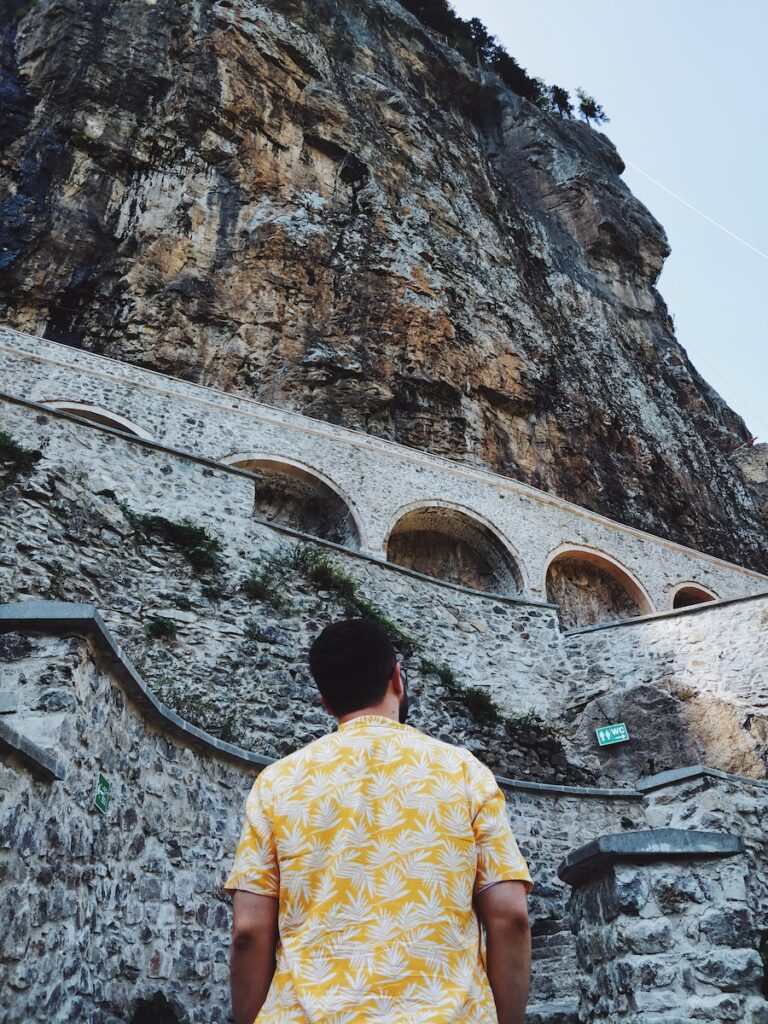
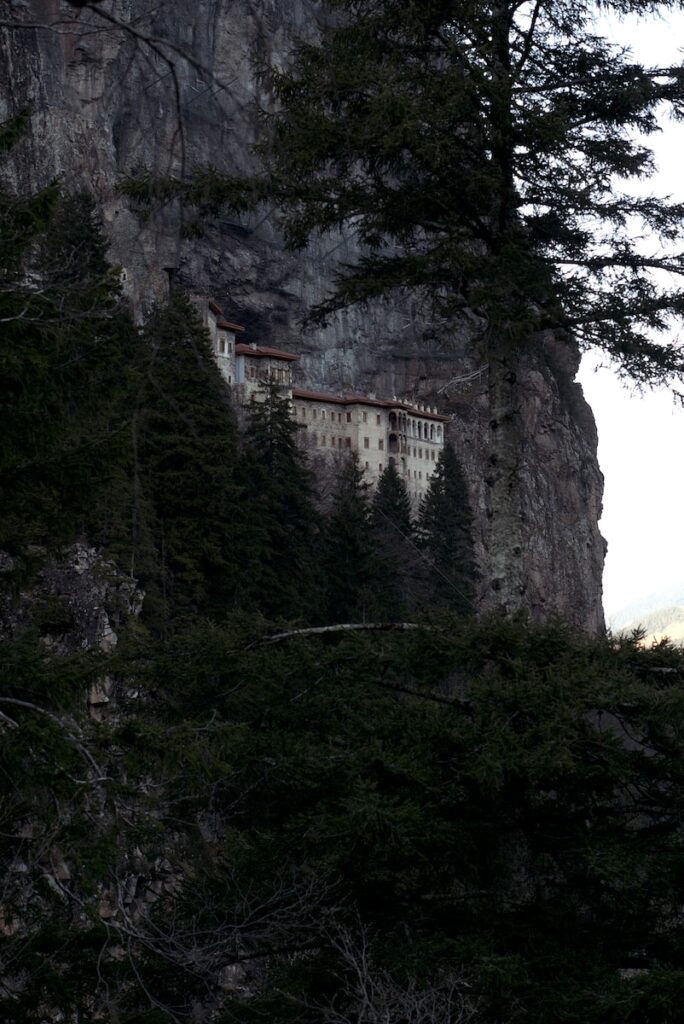
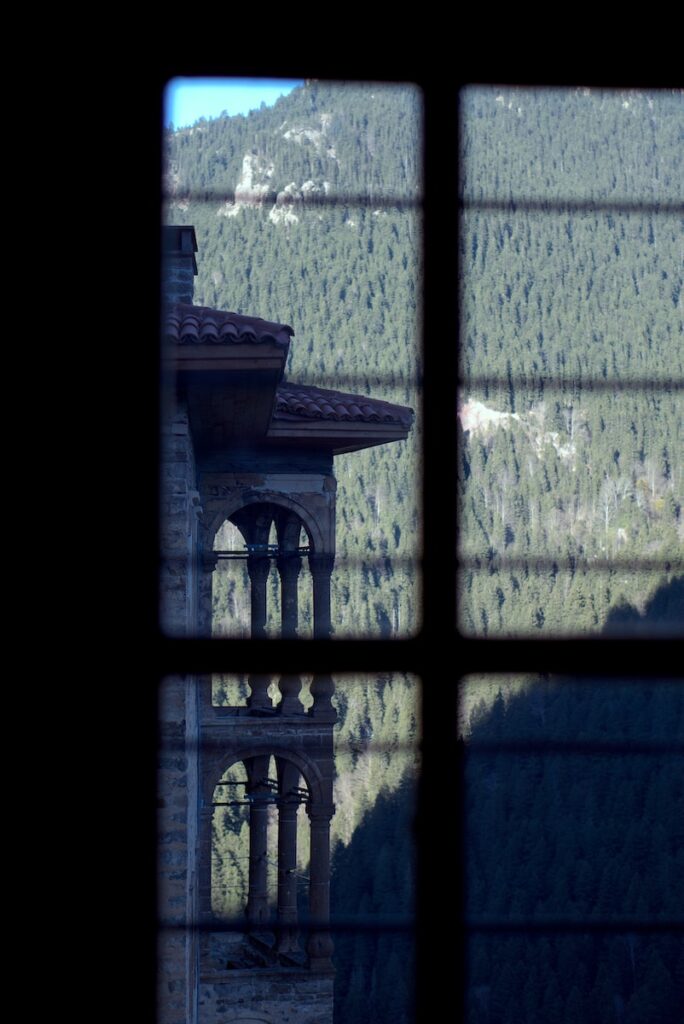
The Architecture of Sumela Monastery
One of the most striking features of Sumela Monastery is its unique architecture. Built into the side of a cliff face using local stone materials, this structure blends seamlessly with its surroundings while still standing out as an impressive feat of engineering.
Inside Sumela Monastery are numerous rooms that were used for various purposes throughout its long history. Visitors can explore living quarters where monks would have slept and worked on their religious studies or admire intricate frescoes that decorate the walls of the monastery’s many chapels.
The Significance of Sumela Monastery
Sumela Monastery is not just a beautiful structure but also an important symbol of the region’s cultural heritage. For over a thousand years, this monastery served as a center for Greek Orthodox worship and played an essential role in the lives of those who lived in the surrounding area.
Today, Sumela Monastery stands as a testament to the resilience of faith and culture throughout history. Despite being abandoned and left to ruin for nearly a century, this incredible structure has been restored to its former glory, allowing visitors from all over the world to experience its beauty and significance firsthand.
How Did They Build Sumela Monastery?
Main Church: A Three-Story Building with a Central Dome and Two Bell Towers
The main church of Sumela Monastery is the most prominent building in the complex, standing tall at three stories high. Built in the 13th century, it underwent renovations in the 19th century to restore its original glory. The church features a central dome and two bell towers that are visible from afar, making it an iconic landmark of Trabzon.
Inside the church, visitors can marvel at intricate frescoes and murals that adorn the walls and ceilings. These paintings depict scenes from biblical stories such as the life of Jesus Christ, Mary, and other saints. The colors used in these artworks have stood the test of time and remain vibrant to this day.
Chapels: Small Buildings Dedicated to Various Saints
Surrounding the main church are several small buildings called chapels. These structures were built to honor various saints and are decorated with frescoes and icons depicting their lives. Visitors can explore each chapel’s unique design elements while taking in breathtaking views of Trabzon’s lush greenery.
One notable chapel is dedicated to St. George, who is depicted slaying a dragon on one of its walls. Another chapel honors St. Barbara, who was known for her unwavering faith during persecution by Roman authorities.
Kitchens: A Place for Feeding Monks and Visitors
The kitchens of Sumela Monastery were built to feed not only monks but also visitors who came to seek refuge or pay their respects. The kitchen features a large oven where bread was baked daily for consumption by all inhabitants of the monastery.
Adjacent to the kitchen is a water cistern that collected rainwater for use in cooking and drinking purposes. There were also storage rooms where food supplies were kept fresh throughout different seasons.
Guesthouses: Accommodation for Pilgrims and Travelers
Sumela Monastery’s guesthouses provided accommodation for pilgrims and travelers who needed a place to rest. These structures consist of several rooms with fireplaces, wooden furniture, and other basic amenities.
The guesthouses’ design elements are simple yet functional, providing visitors with a comfortable space to relax after a long journey. The monastery’s serene surroundings make it an ideal place for meditation and reflection.
Library: A Treasure Trove of Rare Manuscripts and Books
The library of Sumela Monastery contains a vast collection of rare manuscripts, books, and documents related to theology, philosophy, history, and literature. Visitors can explore the library’s extensive collection while admiring its unique architectural design.
The library is home to ancient texts that have been preserved for centuries. Some of these manuscripts date back to the Byzantine era and provide valuable insights into the region’s history.
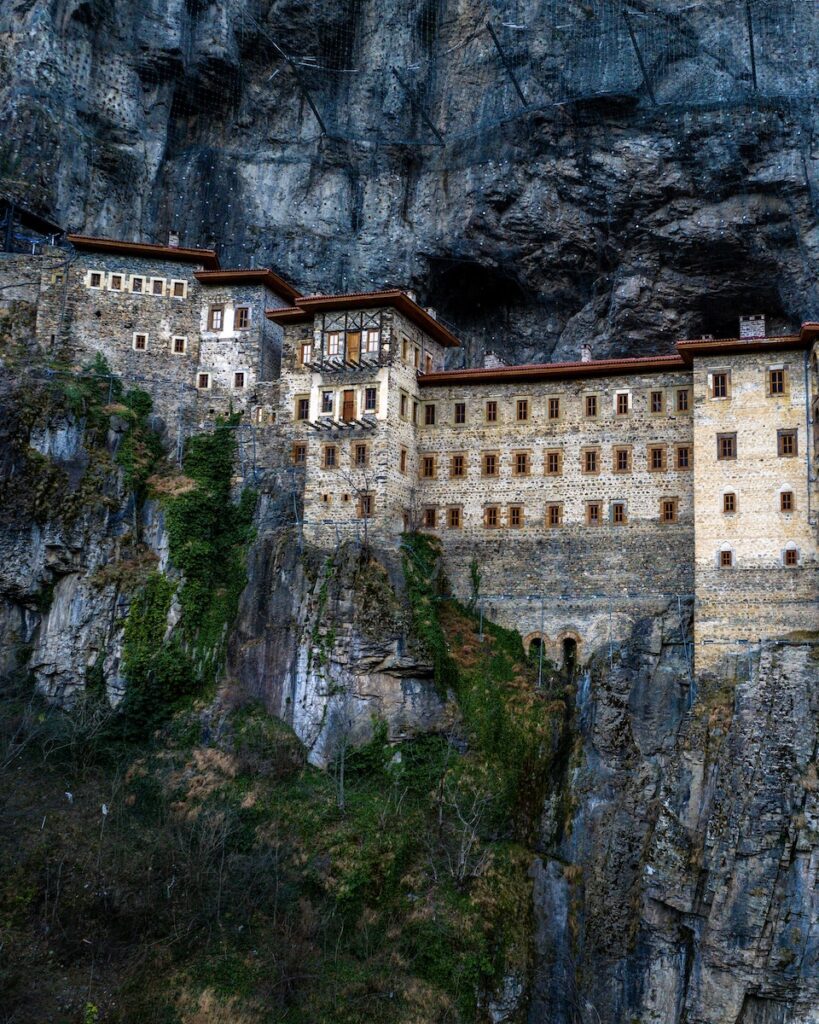
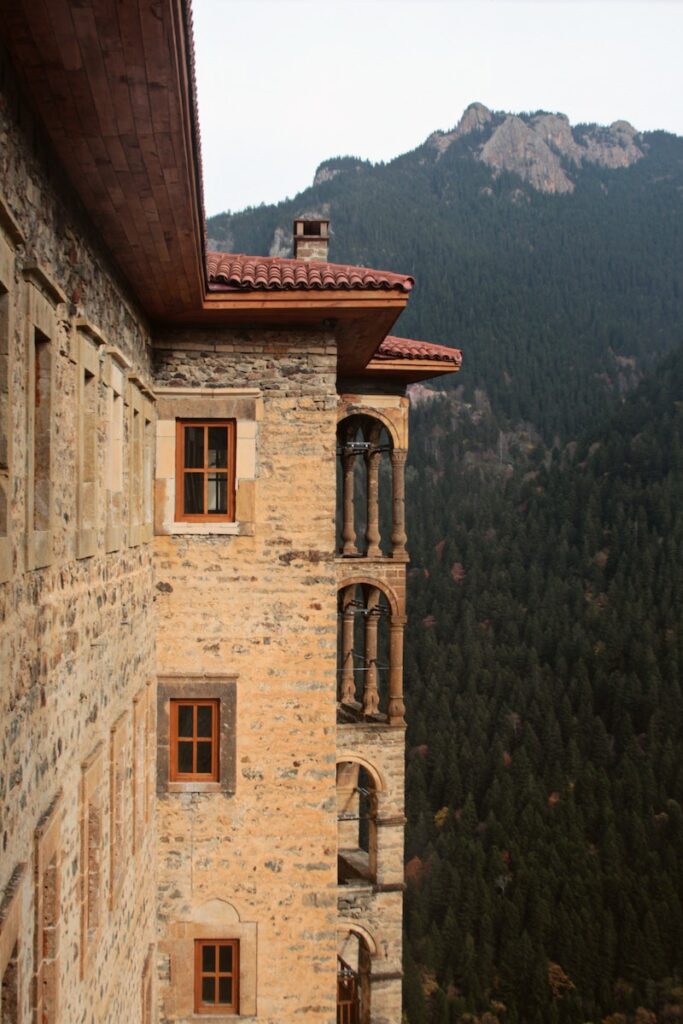
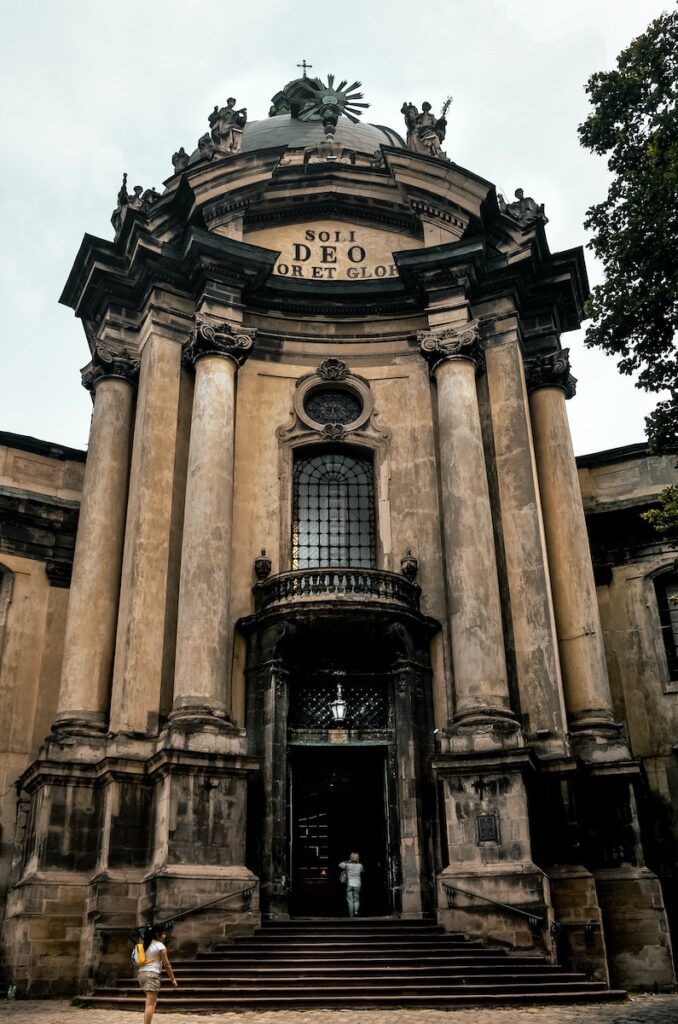
The Main Monastery Building: Design and Architecture
Monastery Complex Design: A Blend of Nature and Architecture
Nestled in the Pontic Mountains, the Sumela Monastery complex is a marvel of architectural design. The main monastery building, which houses the monks’ living quarters, church, and chapels, is a three-story structure that blends seamlessly with its natural surroundings. The inner courtyard serves as the heart of the monastery complex, providing a peaceful space for contemplation and worship.
The Church: A Masterpiece of Artistry
At the center of the Sumela Monastery complex stands the church – an architectural masterpiece that has stood the test of time. The intricate frescoes adorning its walls are a testament to the skill and artistry of their creators. These frescoes depict scenes from biblical stories and are considered some of the finest examples of Byzantine art in existence.
The wooden iconostasis that separates the nave from the sanctuary is another example of exceptional craftsmanship. Carved from walnut wood in 1783 by local artisans, it features intricate details such as vines, flowers, and birds. This stunning piece is not only a work of art but also holds great religious significance for Orthodox Christians.
Accessing Upper Levels: A Challenging Journey
To reach the upper levels of the Sumela Monastery building requires climbing up a narrow stairway that winds up through the mountain terrain. While this journey may be challenging for some visitors, it offers breathtaking views of both nature’s beauty and human ingenuity.
Water Supply System: An Engineering Marvel
One remarkable feature at Sumela Monastery is its water supply system – an engineering marvel designed to bring water from a nearby spring into every part of the complex. The aqueduct system was built using stone blocks cut by hand by skilled craftsmen who worked tirelessly to ensure its success.
The water was used for drinking, cooking, washing clothes and dishes; it was essential for daily life at Sumela Monastery. The monks who lived here relied on this system for their survival, and its success is a testament to the ingenuity and resourcefulness of those who built it.
The Site: A Place of Refuge
The Sumela Monastery complex was founded in the 13th century by Alexios III as a center for Orthodox priests seeking refuge from persecution. The site’s location on a steep cliff made it an ideal place to hide from those who sought to do them harm.
Over time, the monastery grew in size and importance, becoming a center of learning and worship. Today, it stands as a testament to the resilience and faith of those who built it – a place where visitors can experience both natural beauty and human creativity at its finest.
Frescoes and Ancient Graffiti at Sumela Monastery
Stunning frescoes and murals adorn the walls of Sumela Monastery, dating back to the 6th century. These images depict scenes from the life of Christ, religious figures, saints, and angels. The student rooms and rock church dedicated to the Black Madonna or Virgin Mary are among the places where visitors can admire these artworks.
The frescoes are not the only historical artifacts that visitors can see at Sumela Monastery. Ancient graffiti etched into the walls offer a glimpse into the lives of those who lived and worked there centuries ago. These inscriptions provide valuable insights into how people communicated with each other in ancient times. Visitors can explore these cave-like rooms where they will find graffiti on almost every surface.
Despite being in ruins today, efforts are underway to preserve what remains of Sumela Monastery and turn it into a museum. The large aqueduct that once brought water to the fountain is one of the most impressive structures still standing today. Visitors can marvel at this engineering feat as they take in breathtaking views of Greece from atop a cliff.
Sumela Monastery is an important part of history that should be preserved for future generations to appreciate. The frescoes and ancient graffiti offer unique glimpses into life centuries ago, while also showcasing incredible artistry that has stood the test of time.
Tours and Day Trips to Sumela Monastery, Cappadocia Tours and Day Trips
Touring Sumela Monastery: A Must-Visit Tourist Attraction in Trabzon, Turkey
Sumela Monastery is a stunning tourist attraction located in the Altındere National Park, Trabzon, Turkey. Visitors can take full-day tours and day trips to the monastery to explore its unique architecture and religious significance. The monastery is built on a steep cliff, providing visitors with breathtaking views of the surrounding natural scenery.
Exploring Sumela Monastery
Visitors can learn about the history and significance of Sumela Monastery during their visit. The tour guides provide informative commentary about the unique architecture and religious importance of the monastery. The interior of the monastery is adorned with beautiful frescoes and carvings that depict scenes from Christian mythology.
The journey to reach Sumela Monastery involves a 1.5 km hike through lush green forests, which adds an element of adventure to your trip. The trail is well-maintained and offers stunning views of the Altındere Valley along the way.
Day Trips to Sumela Monastery
Full-day tours and day trips are available for those who want to explore more of Turkey’s cultural and historical sites. These tours include transportation from your hotel or accommodation in Trabzon to Sumela Monastery, making it easy for visitors to plan their trip.
During these tours, visitors can also explore other attractions in Trabzon such as Hagia Sophia Museum, Ataturk’s Mansion, Boztepe Hill, Uzungol Lake, Ayder Plateau, Rize Tea Plantations and many more.
Cappadocia Tours: Exploring More Cultural & Historical Sites
Cappadocia is another popular destination in Turkey that offers plenty of cultural and historical sites for tourists to explore. Visitors can take full-day tours or day trips from Istanbul or Ankara to Cappadocia.
The region is famous for its unique geological formations known as “fairy chimneys” and its underground cities. Visitors can explore the Goreme Open-Air Museum, which is a UNESCO World Heritage Site that features rock-cut churches with beautiful frescoes.
Visitors can also take hot air balloon rides over the stunning landscape of Cappadocia, which is an experience not to be missed. The tours provide visitors with informative commentary about the history and significance of each attraction.
Preservation Efforts for Sumela Monastery
Restoration Works for Sumela Monastery
Restoration works for Sumela Monastery started in 2016, and it is expected to be completed by 2023. The restoration project was initiated due to the severe damage caused by natural disasters and neglect. The monastery, which is located in Turkey’s Trabzon province, was closed to visitors in 2015 due to safety concerns.
The restoration project is being carried out by a team of experts in architecture, engineering, and conservation. The team has been working tirelessly to restore the monastery to its former glory while ensuring that it remains safe for visitors. The restoration works include stabilizing the rock face, repairing the frescoes and mosaics, and reinforcing the structure of the monastery.
Stabilizing the Rock Face
One of the major challenges faced during the restoration works was stabilizing the rock face on which Sumela Monastery is built. Over time, weathering had caused significant damage to the rock face, making it unstable. To stabilize it, engineers used a combination of steel anchors and reinforced concrete to secure the rock face.
Repairing Frescoes and Mosaics
Sumela Monastery is known for its stunning frescoes and mosaics that date back centuries. However, many of these artworks had been damaged over time due to exposure to moisture and other environmental factors. As part of the restoration works, conservators have been working diligently to repair these artworks using traditional techniques.
Reinforcing Structure of Monastery
Another critical aspect of restoring Sumela Monastery was reinforcing its structure. Over time, parts of the monastery had become weakened or damaged due to natural disasters such as earthquakes or neglect. To ensure that visitors can safely explore this historic site once again, engineers have reinforced key areas such as walls and roofs with modern materials like steel beams.
Winter at Sumela Monastery: What Happens?
The winter season at Sumela Monastery is a time of harsh weather conditions and challenges. The monastery, located in the Macka district of Trabzon Province in Turkey, experiences heavy snowfall and freezing temperatures during this period. In this section, we will discuss what happens during winter at Sumela Monastery.
Monks Move to Lower Altitudes
During winter, the monks who live in the monastery move to lower altitudes. This is because the harsh weather conditions make it difficult for them to access basic necessities like food and water. The monks move to nearby villages where they can find shelter and supplies until spring arrives.
Damage to Structures
The snow and ice that accumulate on the structures of Sumela Monastery can cause damage. The weight of the snow can lead to structural damage or even collapse of roofs or walls. Water from melting snow can seep into cracks in the walls and freeze, causing further damage. As a result, repairs are necessary when spring arrives.
Spring Brings Renewal
Despite the challenges of winter, spring brings renewal to Sumela Monastery. As temperatures rise and snow melts away, visitors are able to access the monastery once again. The beauty of blooming flowers and greenery adds a new dimension to its already stunning landscape.
How They Built Sumela Monastery
Natural and Man-made Materials
The Sumela Monastery is a remarkable feat of engineering that has withstood the test of time. The monks who built it used a combination of natural and man-made materials to construct the monastery. They used stone, wood, and mud to create a structure that would last for centuries.
The use of natural materials was essential in building the monastery, as it had to blend in with its surroundings. The monks used local stones and rocks to construct the walls of the monastery. They also used wood from nearby forests for beams and supports.
To make the walls stronger, they mixed mud with straw to create a plaster-like substance that was applied over the stones. This mixture was not only strong but also helped insulate the interior from cold weather.
Unique Architectural Features
The main building of Sumela Monastery is divided into three levels, each with its own unique architectural features. The first level consists of a courtyard surrounded by rooms for storage and living quarters for the monks.
The second level contains the main chapel where religious ceremonies were held. The chapel is adorned with intricate frescoes depicting scenes from the Bible and Orthodox Christian traditions.
Finally, on top of everything else sits an imposing bell tower which can be seen from miles away. It’s said that when visitors approached the monastery, they could hear its bells ringing long before they could see it.
Transporting Building Materials
Building a monastery on the side of a cliff presented significant challenges when it came to transporting building materials up to where they were needed. To overcome this challenge, monks developed an ingenious system using pulleys and ropes.
They would attach baskets filled with rocks or other heavy objects onto ropes which were then pulled up by other monks at higher elevations using pulleys attached to anchor points on cliffs above them. This allowed them to transport large amounts of material quickly and efficiently without having to carry everything by hand up steep inclines.
Preserved Frescoes and Carvings
The interior of the Sumela Monastery is decorated with intricate frescoes and carvings that have been preserved for centuries. The frescoes depict scenes from the Bible, as well as images of saints and religious figures.
The carvings are equally impressive, with ornate designs adorning everything from doorways to columns. The level of detail in these works of art is truly remarkable, especially considering they were created hundreds of years ago.
Construction Timeline
The construction of the Sumela Monastery was a massive undertaking that took several decades to complete. Work began in the 4th century AD when two monks discovered a cave on the side of a cliff and decided to make it their home.
Over time, more monks arrived, and they began expanding their living quarters by carving out additional rooms in the rock face. Eventually, they decided to build a proper monastery on top of what they had already created.
Construction continued well into the 14th century when it was finally completed. Despite its age, Sumela Monastery remains an impressive example of Byzantine architecture and engineering.
See Also: Modern Period and Future Plans for Sumela Monastery
In conclusion, Sumela Monastery is a remarkable and historic site that has stood the test of time for over 700 years. The construction of this impressive structure in the 13th century was no easy feat, as it required a great deal of planning, resources, and skilled labor. Despite being abandoned for many years, the monastery still stands today as an important cultural and religious landmark in Turkey.
The future of Sumela Monastery remains uncertain due to its fragile state and the challenges posed by natural disasters. However, there are ongoing efforts to preserve this iconic site for generations to come. In recent years, restoration work has been carried out on several buildings within the complex to ensure their longevity.
Furthermore, Sumela Monastery has been included on Turkey’s tentative list for UNESCO World Heritage status. If successful, this would be a significant achievement that recognizes the historical significance and architectural beauty of this unique site.
For those interested in visiting Sumela Monastery or learning more about its history and construction, there are numerous tours and day trips available from nearby cities such as Trabzon and Cappadocia. These tours offer visitors a chance to explore the stunning architecture and ancient frescoes that make up this fascinating complex.
In conclusion, Sumela Monastery is not only a testament to human ingenuity but also an important reminder of our shared cultural heritage. Its construction over 700 years ago stands as a testament to what can be achieved with determination and hard work. As we move into the future, it is essential that we continue to protect sites like Sumela Monastery so that they may continue to inspire us for generations to come.
Sources:
FAQs
Sumela Monastery was constructed in the 4th century AD by two Athenian monks, Barnabas and Sophronius.
Local materials like limestone and granite were used to construct the monastery. The builders carved out rooms, chapels, kitchens, living quarters, and even water channels from solid rock using primitive tools like chisels and hammers.
An aqueduct system was engineered to bring water from nearby springs to supply drinking water and irrigation needs within the monastery grounds.
Some notable features of the monastery include its stunning frescoes depicting religious scenes, its aqueduct system, and its unique architecture that blends seamlessly with its natural surroundings.
Sumela Monastery is located in the Macka district of Trabzon, Turkey, and is open to tourists who wish to explore its historic structures and marvel at its architecture. There are various tours and day trips available for visitors to make the most of their experience at the monastery.
One Comment